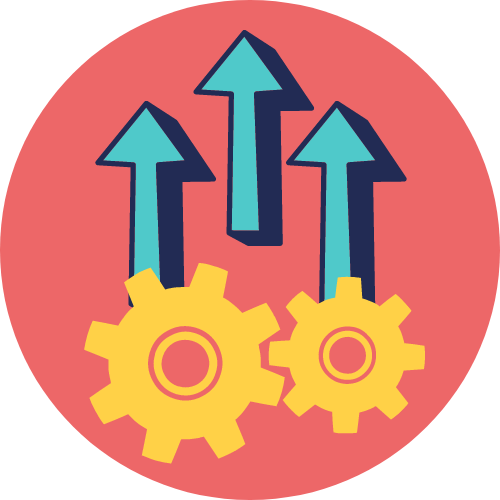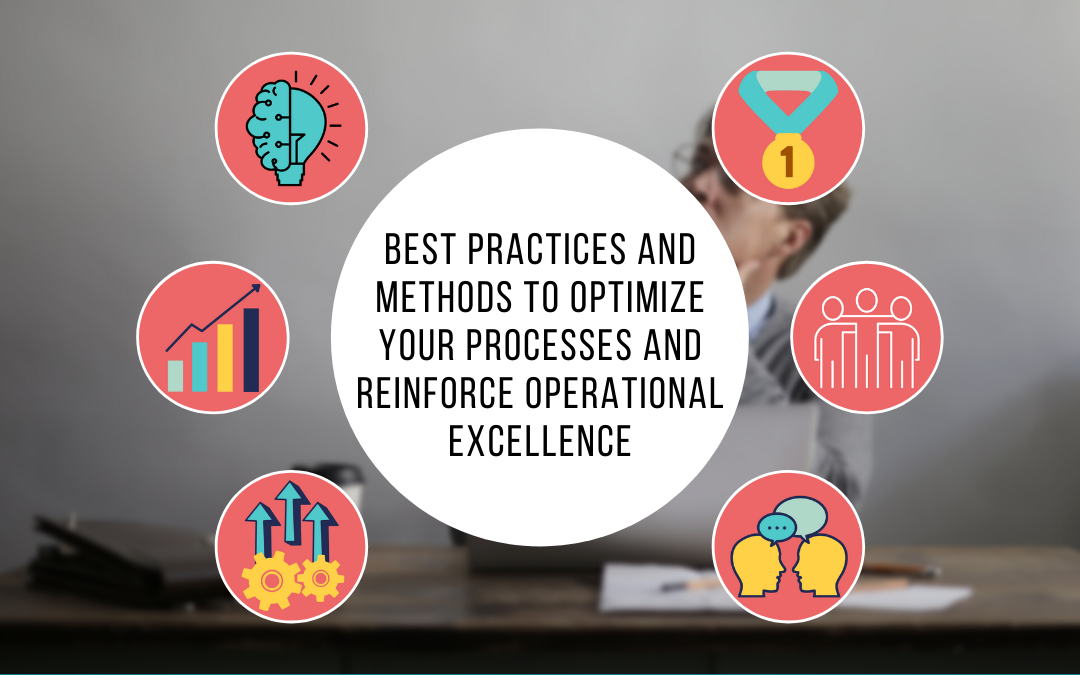All business leaders want to implement or strengthen operational excellence. While the primary goal is customer satisfaction, the path to this goal sometimes leads to adjustments, such as cost reductions or improvements in the well-being of employees in the company. Different methods can be used to carry out the necessary transformation actions, such as lean management or six-sigma. These processes were deployed in automobile factories in the 1980s, but they have proven their worth and remain effective today.
What is operational excellence?
Operational excellence corresponds to a vision of work that involves all employees in a process of improvement in order to satisfy the customer, while respecting costs and deadlines. It engages the company in the deployment of best practices to increase the effective productivity of employees. There are 3 stages.
Operational excellence
It refers to what is happening in the moment. Employees are at their posts and must complete their tasks without making mistakes. There are no questions to ask, as you just have to follow the processes in place. In case of a problem, a correction is immediately necessary.


Continuous improvement
At this point, each employee is working normally and according to the principle of operational excellence, but they are also asking themselves how to improve productivity. Teams conduct tests until they achieve the expected objectives, which in turn become operational excellence.
Innovation
It is about focusing on new processes and products that do not yet exist in the company. In this context, everything is permitted: the wrong path, the mistake and the approximation. Brainstorming is required to come up with new ideas. Research and development departments are particularly busy.

Best practices for implementing operational excellence
You can act on several levers, but two of them appear particularly relevant: the human and the processes.

Consider your employees
Involving all employees in the company and showing them that they are valuable are essential steps. Your employees have a lot to contribute, so pay attention to them and listen to them. Everyone at their own level can make a difference. You can, for example, set up a suggestion box, with a small reward if one of the suggestions turns out to be useful. If they feel that their opinion counts, your employees will be keen to make suggestions
Help everyone to excel
As a leader, you are responsible for providing energy and direction to achieve excellence. Most of your employees want to do a good job, if not perfect! Encourage them with kindness and be grateful for what they bring to the company. Be aware of what works and what doesn’t in order to explore new avenues of development.


Re-evaluate your processes
If you are not achieving your goals, whatever they may be, don’t necessarily blame it on one thing. Instead, find out which part of the process is the source of the malfunction. Then you can implement corrective actions to solve the problems. Adjustments are constantly necessary, as nothing is ever set in stone. The human factor of a production system will encourage you to vary the modes of operation.
Getting it right the first time
To do this properly, each step in the process must be done correctly. If an error occurs during the task, stop the execution immediately and rectify what needs to be rectified. You may have to move your organizations to become aware of a malfunction more quickly. Different workstations can be a factor for improvement.


Connect the synergies
The employees of a team in the same department work together in solidarity. This dynamic is not common with other departments, with each entity focusing on the interests of its team without extending the benefit to the entire company. Your position as a leader allows you to implement interactions between departments. Encourage the exchange of ideas and knowledge between your teams, organize meetings, brainstorming, mix teams temporarily and set up activities to bring your employees together.
Clearly state the objectives to be achieved
In order to involve employees in a continuous improvement process, be clear on the means you want to deploy, on the objectives to be reached and on the way you plan to achieve them. An objective view of the road ahead will help your employees stay on course. Communication is key in this context. You will not achieve success alone: your workforce must be able to measure their impact on the success of the company. Everyone has to feel useful in order to want to make a contribution.

A tool to reach
operational excellence at work?
Lean Six Sigma
It is a combination of two management methods aimed at improving customer service.

Lean
Born in the Toyota factories in the 1950s, it is a management method that aims to reduce costs and deadlines by taking into account human (employees) and material (field) constraints.
Here are the key points:
- control the processes through the employees, whatever their function;
- to bring the action on the ground, in the production systems as a possible axis of improvement;
- Introduce “Just in time” to reduce inventories;
- avoid overproduction, reduce material wastage ;
- implement the well-known organizational tools such as Kandan, Kaizen, Jidoka, etc. ;
- Improve profitability by increasing customer satisfaction and employee performance.
The Six-sigma
Created in Motorola factories thanks to the industrialization of new technologies, this system tends to eliminate variations and defects in the processes. It is suitable for all areas of the company: purchasing, logistics, administration, etc.
It is defined as follows:
- a state of mind that ensures that customers receive their orders with a zero defect service;
- a comparison of what the competition is doing in order to stand out from them;
- an indicator to measure the standard deviation of the process production curve (the Sigma) up to six times between the customer’s low and high specification limit;
- a method for continuous improvement and employee involvement.


Combining the two approaches
Both working methods are oriented towards customer service and employee involvement. They aim to improve quality, deadlines and costs. Both of them allow to manage the improvement process in its entirety.
Keeping track of “moving forward together
All attempts, even if unsuccessful, should be recorded to document collective learning. What is not immediately usable may be usable in a few years. An idea is never lost. In addition, the deployment of some methods can be gradual.
Operational excellence through performance management is built up as it goes along. You will be able to implement lean, cost reduction, KPIs and dashboards. Continuous improvement will only lead to sustainable transformation if the principles of operational excellence are deeply embedded in the corporate culture.
